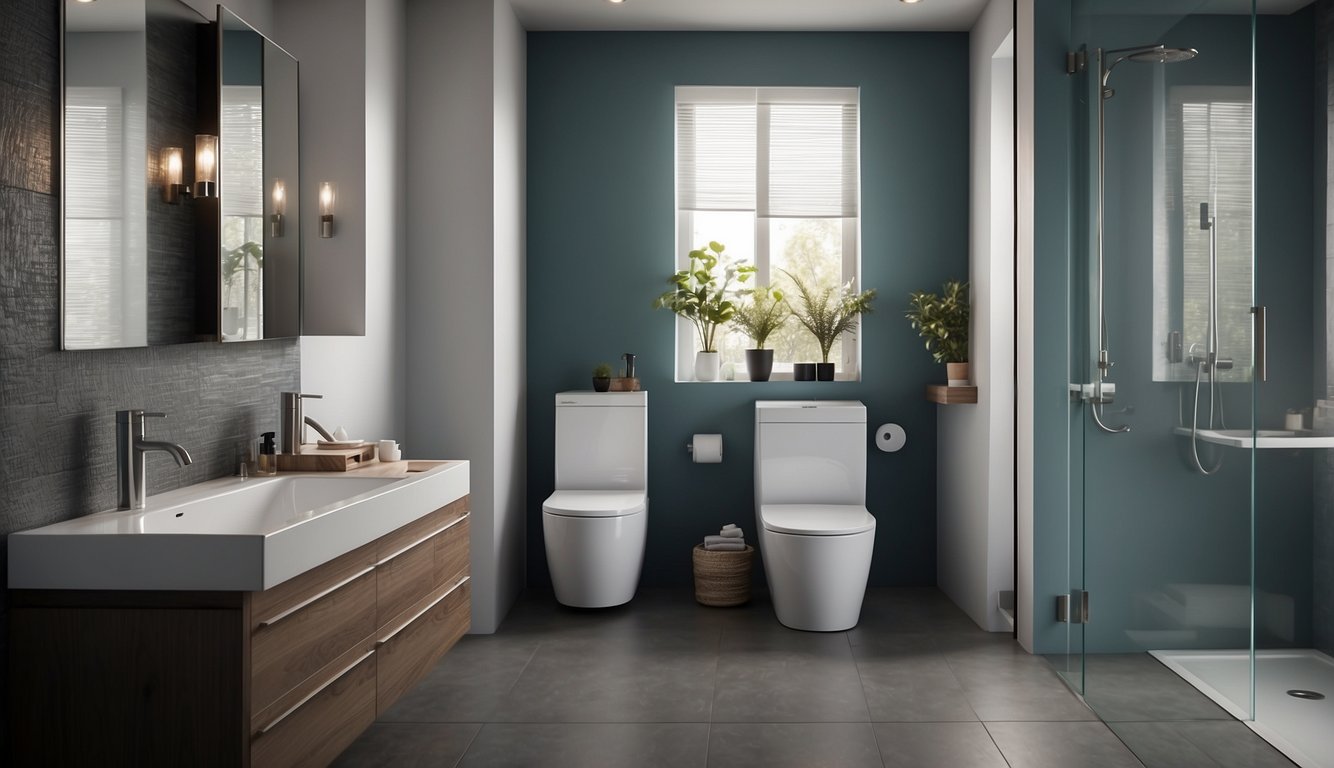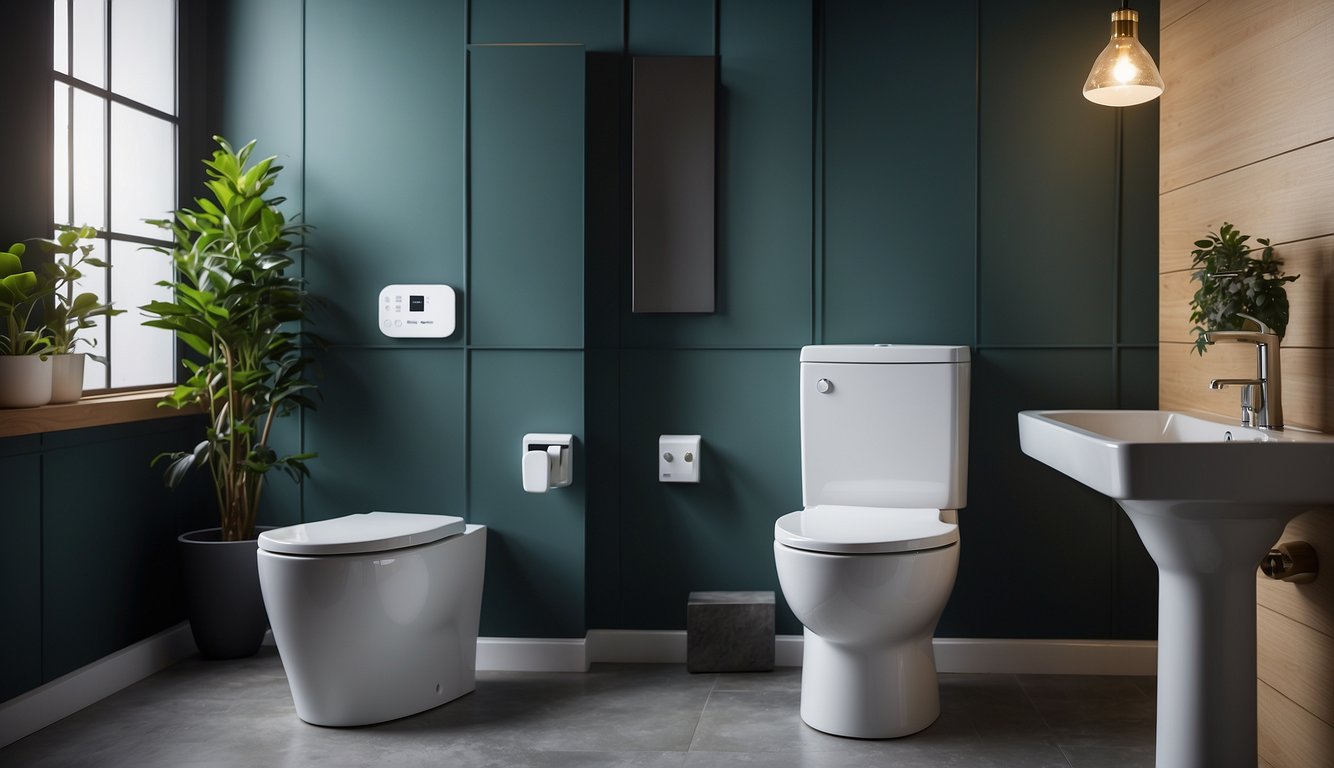Tankless Toilet Pros and Cons: Understanding the Benefits and Drawbacks
As someone who has navigated the complexities of modern bathroom design, I understand that choosing the right type of toilet is crucial for both functionality and aesthetics. Tankless toilets, a sleek and innovative alternative to traditional tank models, offer several benefits, including water conservation and space-saving capabilities. They operate using high water pressure that comes directly from the supply line to flush waste, eliminating the need for a tank.
In considering a tankless toilet for your home, it’s important to weigh these advantages against potential drawbacks. While these toilets can be a smart choice for small bathrooms, they often require sufficient water pressure to be effective.
Homeowners without the necessary pressure may need to invest in additional equipment like pumps, which could affect the installation and operation costs. My professional experience has shown that understanding these pros and cons is essential for making an informed decision.
Benefits of Tankless Toilets

As someone who has extensively researched and worked with bathroom fixtures, I’ve discovered tankless toilets offer distinct advantages, particularly in terms of space efficiency, water conservation, and advanced features.
Space Efficiency and Aesthetic Appeal
Tankless toilets, with their sleek and compact design, are a boon for smaller bathrooms where space is at a premium. Their absence of a conventional tank means they take up considerably less space, making them an ideal choice for minimalist or smaller bathroom layouts.
The modern and stylish aesthetic of tankless toilets also enhances the overall look of the bathroom, providing a touch of elegance and contemporary appeal.
Water Conservation and Eco-Friendliness
Water conservation is a critical factor in today’s eco-conscious world, and tankless toilets address this by using significantly less water per flush compared to traditional toilets. They are engineered to use a high-pressure flush that minimizes water usage without compromising on performance.
This water-saving feature not only benefits the environment but can also lead to reduced utility bills—a win-win for both the planet and homeowners.
Modern Features and Additional Benefits
Tankless toilets come equipped with various state-of-the-art features that can include touchless flushing, remote controls, and self-cleaning options, providing enhanced cleanliness and convenience.
Some models even allow customizable settings, such as adjustable seat heights, making them suitable for all users. Moreover, the innovative design of tankless toilets can prevent water overflow, adding a layer of security in preventing potential bathroom flooding incidents.
By integrating tankless toilets into your bathroom, you will not only embrace water-saving and space-optimizing features but also add a stylish, modern touch that could elevate the overall user experience.
Considerations for Installation
Before diving into the specifics, it’s important to be aware that installing a tankless toilet will involve a close look at your home’s plumbing and electrical systems. As someone who has dealt with these installations, I can guide you through the essential considerations to ensure the process is seamless.
Plumbing Requirements and Costs
Your plumbing system must meet specific requirements for a tankless toilet to function properly. Unlike traditional toilets with cisterns, tankless toilets require a direct connection to a supply line that can handle high water pressure. This is crucial for the flush mechanism to work effectively.
- Plumbing System: Ensure your plumbing can deliver at least the minimum required pressure. If not, an electric pump might be necessary, leading to additional cost.
- Installation Cost: Professional installation is needed. This might include upgrading pipes and installing necessary valves, which can affect overall installation costs.
Electrical Dependencies and Power Outage Concerns
Tankless toilets may rely on electricity to power their flush mechanism, particularly if an electric pump is used to boost water pressure. This dependency on electricity raises two main concerns:
- Power Outages: In the event of a power outage, your tankless toilet may be unable to flush. It’s wise to have contingency plans in such scenarios.
- Electrical Costs: If an electric pump is needed, consider the cost for the pump itself and the potential increase in your electric bill.
Remember, while the installation of a tankless toilet can be more complex and costly upfront, it can provide long-term benefits such as space savings and water efficiency. Always consult with a professional to assess your specific situation.
Challenges and Limitations

While tankless toilets offer a modern and streamlined design, they come with their own set of challenges and limitations which can impact both maintenance and functionality.
Maintenance and Repair Considerations
I find that the lack of a tank simplifies the initial design of a tankless toilet, but can complicate future maintenance. Without a tank, the parts are less accessible, which sometimes means that when repairs are needed, they can entail a more complex process compared to traditional toilets.
Additionally, should an internal component fail, the replacement can be proprietary and potentially more expensive. My experience underscores the importance of considering these maintenance aspects:
- Component Accessibility: Often harder to reach without a tank
- Cost of Repairs: Can be higher due to specialized parts
Functional Concerns and Compatibility Issues
One critical aspect I always check is the water pressure requirement. Tankless toilets rely on a strong water pressure to function effectively, which can be an issue if your home’s plumbing system isn’t up to the task. This often entails ensuring large pipes or a pump installation to meet the pressure demands.
Also, a notable disadvantage is their reliance on electricity, which poses a risk during power outages. Moreover, they come with a high upfront cost, making them a significant investment compared to traditional toilets. Here are the key points:
- Water Pressure Requirement: Needs consistently high pressure, possibly requiring infrastructure upgrades
- Electricity Dependency: May not flush during power outages
- High Upfront Cost: Generally pricier initial investment
- Large Pipes or Added Pump: Often necessary to provide adequate pressure
Let Us Know How We’re Doing!
Did this expertly prepared resource answer your question?
Do you have another question about home maintenance, home improvement projects, home appliance repair, or something else?
Get more information, send in questions and keep the discussion going by contacting the I’ll Just Fix It Myself company customer service team at at 1-800-928-1490 or Email us at [email protected]
